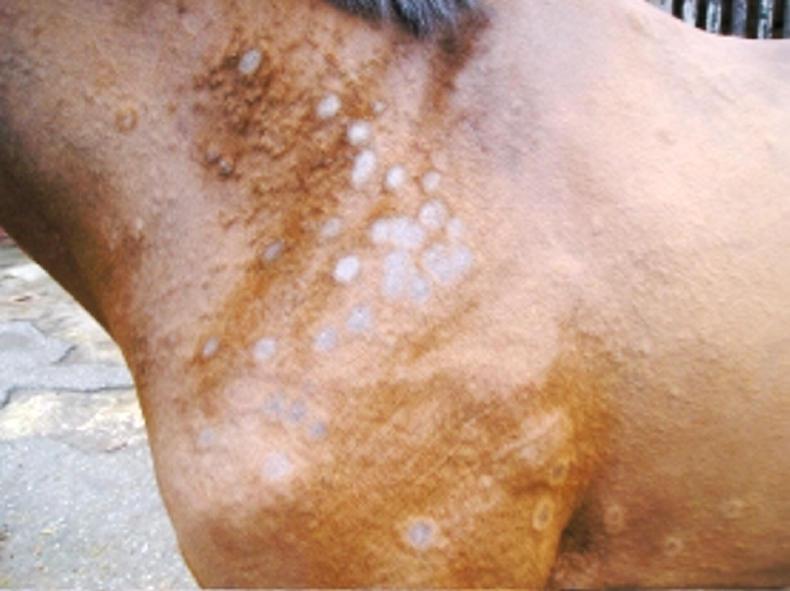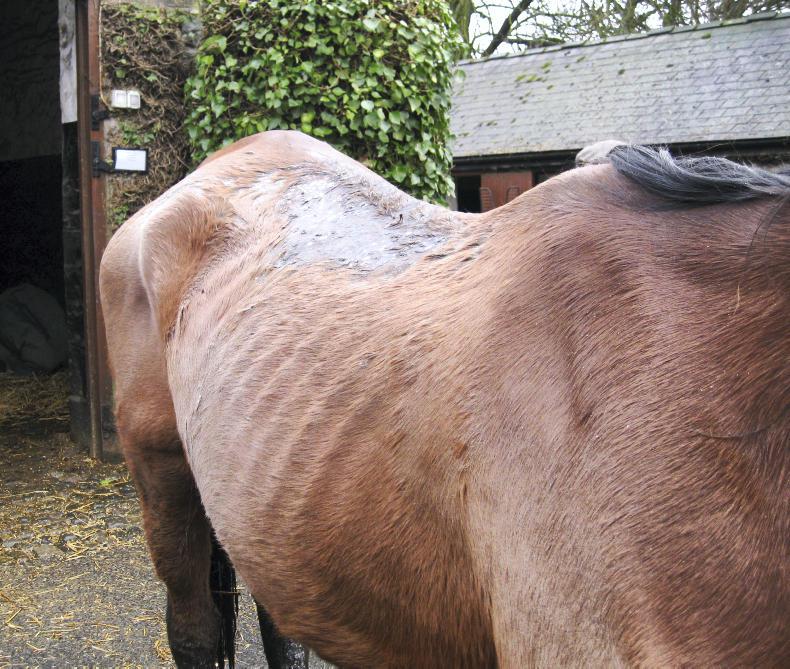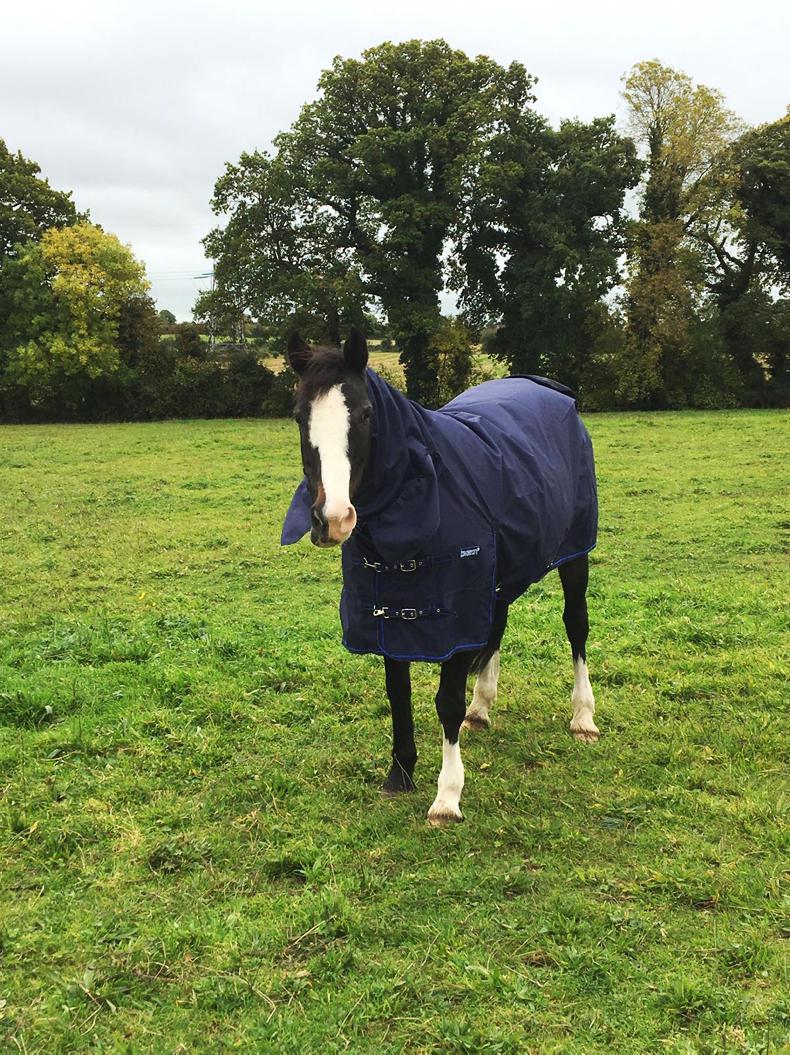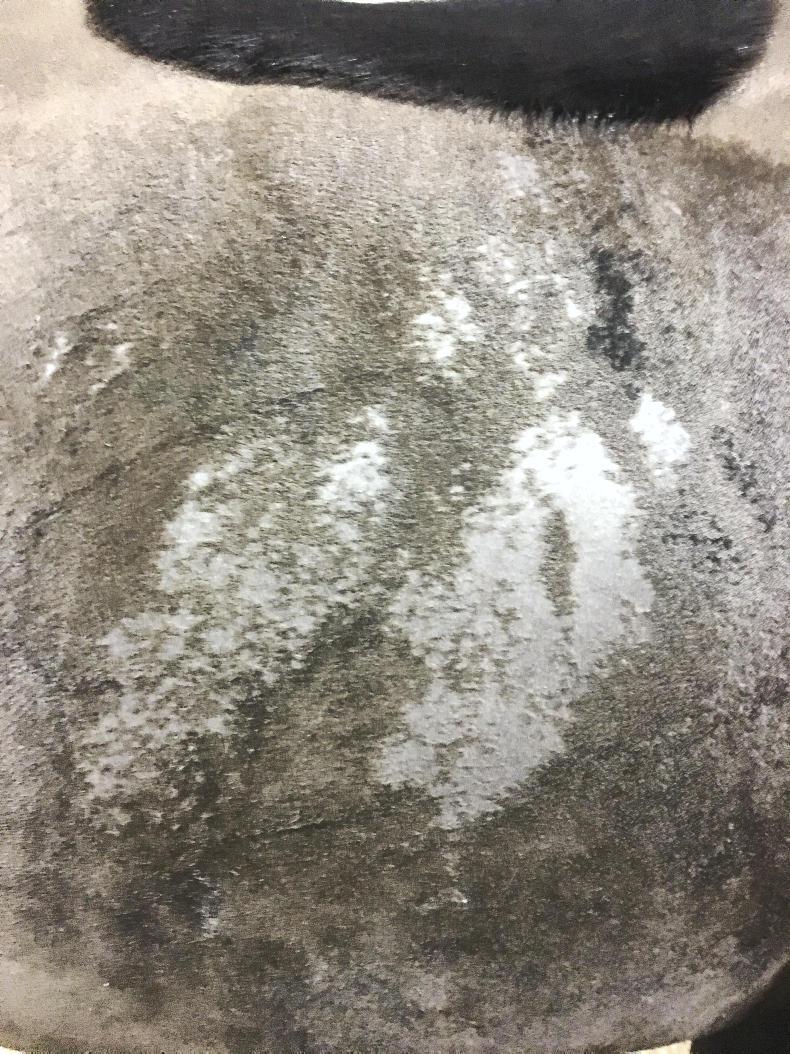THE skin is the most visible of the horse’s body structures and so it is often overlooked, but the skin provides a strong barrier to challenges from outside the body and plays an important role as part of the immune system.
In spite of the exposed position of the skin, it is usually remarkably free of disease. However, mild wet and damp conditions provide the perfect environment for bacteria and fungus to flourish and this can create problems for the horse.
According to veterinary surgeon Neil Mechie the main presenting signs of skin disease are:
COMMON SKIN DISEASES
Some of the common skin diseases horse owners will face during the winter months are:

A highly contagious fungal skin infection which manifests as a circular, tufted area of hair; most commonly seen on areas subjected to local trauma, such as from tack, horse clothing and riders’ boots. These tufted patches of hair stand up against the lie of the coat, and close inspection will reveal a cigarette ash-like deposit between the hairs. The hair in the centre will then be killed by the fungus and fall out to reveal scaly, flaking skin beneath.

A common condition of the lower limbs, caused by a plethora of possible bacteria and occasionally fungal organisms. The skin becomes inflamed and scabby with oozing serum; the coronet, pastern and heels of the foot may also become cracked. In severe cases the leg may swell and the horse may develop lameness.

A very common condition in horses turned out over winter. Skin wetting from rain, long dense hair coat and poor hygiene create an ideal environment for the bacteria to grow on the skin surface. Scabs form causing pain and discomfort and removal of them is often resented and usually leaves a rosy-red area of skin.
CASE STUDY

The seven-year-old mare pictured above presented with a small patch (about the size of a bottle cap) of missing hair on her right side. The mare was wearing a brand new medium-weight turnout rug and was not clipped at the time.
The mare is turned out during the day and is kept in at night time, her rugs are changed daily and she is groomed regularly. The owners initially thought that the horse’s rug might have got caught on something and chaffed the hair so no veterinary advice was sought as the skin was not sore or cut.
A day or so later the mare was clipped to reveal a much larger patch of missing hair which can be seen below (the mare was fully clipped and no other patches of missing hair were found).

The vet was called and it was suspected that the mare had a fungal infection, as the skin wasn’t inflamed or sore.
The vet confirmed that it was not ringworm but explained that you sometimes get other fungal infections, especially in mild winters.
The vet advised putting the mare’s rugs through a 60 degree wash and also advised soaking the clipper blades in a 1:100 bleach solution.
An iodine wash was prescribed for the mare’s side and as it is not serious/extensive the patch should clear up shortly.
NOTE: If you notice any signs of skin disease contact your vet immediately so that your horse can be treated appropriately and the spread of infection can be controlled.




 This is a subscriber-only article
This is a subscriber-only article
 It looks like you're browsing in private mode
It looks like you're browsing in private mode










SHARING OPTIONS: